

It's all happening. Bramley cooking apples for fresh market have been going for a couple of weeks and now Bramley is being picked for long term storage.
Some early picking of Conference pears has started and data supports harvest for long term storage next week.
Discovery has been harvested and the first Red Windsor are ready to occupy Supermarket shelves.
With harvesting for long term storage getting ever nearer, technical managers are busy carrying out maturity testing.
Nigel Jenner - Chief Technical Officer - Avalon Produce Limited allowed me access to his harvest maturity data. Avalon is a leading marketing group for English apple growers. Click on Avalon Produce Ltd
Bramley
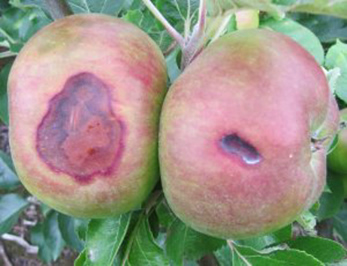 Bramley picking for long term storage is underway on many sites. Early reports suggest the crop is picking lighter than estimates, largely due to the high percentage of sun scorch present in many orchards. Sun scorched fruits should not be harvested, as the damaged cells will break down resulting in high levels of brown rot. Even with slight damage the apples will be completely rotten following several months storage.
Bramley picking for long term storage is underway on many sites. Early reports suggest the crop is picking lighter than estimates, largely due to the high percentage of sun scorch present in many orchards. Sun scorched fruits should not be harvested, as the damaged cells will break down resulting in high levels of brown rot. Even with slight damage the apples will be completely rotten following several months storage.
As mentioned last week, both calcium and phosphorous levels (two nutrients critical for the successful storage of apples) are both close to the long term average for Bramley. However, if you have phosphorous levels lower than 9.0 mg/100g, storage temperatures should be increased from 4.0C - 4.5C to 4.5C - 5.0C to help prevent low temperature breakdown occurring in store.
Conference
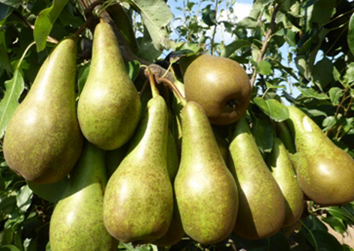 Maturity measurements carried out on Conference this week can be summarised as follows:-
Maturity measurements carried out on Conference this week can be summarised as follows:-
Over the past week, in all regions (East and West Kent and Wisbech), the average pressures have fallen by 0.5-1.0kg, starches have fallen by around 5% and average brix levels have risen by more than 1%. Conference could now safely be harvested for long term storage on all sites.
Streif indices have also fallen by 1.0 and if the current rate of decline continues (likely to increase after the hot weather we have experienced) many sites will be at or close to a streif index of 0.7 by the end of next week. This is the point at which harvesting for long term storage should be completed.
Cox
Maturity measurements carried out on Cox this week can be summarised as follows:-
Although firmness has changed very little over the past week, starch has declined by 5-10% and brix levels have improved. Many sites will need to begin harvesting their orchards for long term storage at the end of next week (5th-6th September).
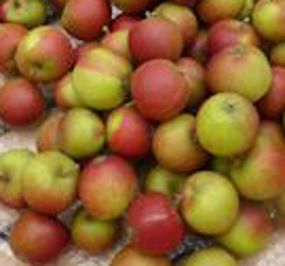 Following the very hot weather over the weekend and the early part of this week, the maturity process is likely to be accelerated over the next few days, so make sure you are checking the maturity of your orchards regularly. For the next week or so, the temperature differentiation between day and night temperatures should be greater than 10C, so red colour development should be good.
Following the very hot weather over the weekend and the early part of this week, the maturity process is likely to be accelerated over the next few days, so make sure you are checking the maturity of your orchards regularly. For the next week or so, the temperature differentiation between day and night temperatures should be greater than 10C, so red colour development should be good.
The hot weather has led to a high incidence of water core showing up in many of the samples we have been analysing this week. Fruit with water core will turn alcoholic if stored in ultra-oxygen (1.2%). Therefore, it is strongly recommended that any fruit stored in low oxygen is stored in a regime of 2% O2, <1% CO2 until store monitoring has confirmed this disorder is no longer present in the fruit.
Cox should be harvested with starch levels between 70-80%. However, it is important that the starch on all apples is <100%, before harvest begins. The picture above shows several apples still at 100%, but this will change very quickly! Cox being stored for more than a month in controlled atmosphere or air regimes should be treated with Smartfesh.
Gala
Measurements carried out on Gala this week can be summarised as follows:-
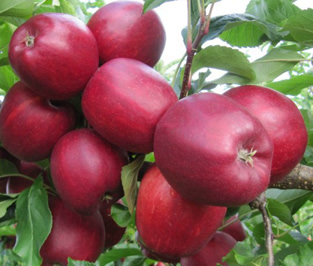 Starch has already started to move in many apples, despite some still remaining 100% black. Picking should begin when the starch has started to move in all the fruits and for long term storage should ideally be completed before the starch has declined to 70%.
Starch has already started to move in many apples, despite some still remaining 100% black. Picking should begin when the starch has started to move in all the fruits and for long term storage should ideally be completed before the starch has declined to 70%.
Typically, the average starch remains between 90-95% for several days, before declining rapidly at around 4% per day. This is predicted to be w/c 9th September on the earliest sites, but will be confirmed in next week's newsletter.
For the past 3 years I have been involved in a storage trial with Cranfield University looking at ways of enhancing/maintaining the flavour of Gala throughout the storage process. Interestingly, in all cases, where Gala was harvested with starch levels above 70% and stored in DCA or ultralow oxygen regimes, there was no benefit whatsoever in using Smartfesh on this variety. Fruit even after 10 days shelf life in 18C, was identical in pressures and it was only in later picked fruit with starch <70% that the benefits of Smartfesh became apparent.
This is not the case for air stored fruit, which will benefit from Smartfresh if stored for more than one month. Please ring me, if you would like to discuss this point further.
Red Windsor
Picking of this variety is underway or due to start imminently on most sites. Water core is a major issue, but providing the starch is moving in all fruits, harvesting should not be delayed. Water core will disperse in store at 1C, but if left on the tree, it could get worse if the warm weather continues and the pressures (some of which are already not great) will plummet!
Storage samples
In order to optimise our store monitoring service and ensure the correct stores are being marketed at the correct time, it is critical that enough samples are provided to carry out proper assessments of your fruit in store. Any orchards with 30 bins or more should have samples of 20 apples taken, which are an accurate representation of the fruit in the store. Remember that this is very often the only means we have of assessing the size, colour and quality profiles of your fruit and preliminary decisions regarding your fruit will be made from samples we assess on farm.
Please also ensure your samples are clearly labelled with farm name, orchard name, store name and picking date (particularly important as later in the year stores with fruit of the same quality are marketed according to picking date).
It is also critical that enough samples are provided. This year, it will be necessary to provide the following numbers of samples for fruit going into store:-
Air stored fruit (all varieties) 5 samples
Cox and Pears 8 samples
Bramley, Gala, Braeburn, Magic Star 12 samples
(plus any other variety being stored long term)
Maturity testing help??
For many years we have operated a maturity testing service where we can accurately assess the maturity of your orchards on-farm and give you accurate advice based on your own individual orchards. If this is of interest to you or indeed you would like to chat over any of the above, please call me on 07870155571.
Kind regards
Nigel
Nigel Jenner - Chief Technical Officer - Avalon Produce Limited
A message from AC Goatham & Son British Apples & Pears largest apple & pear grower with 25 farms spread across Kent
Click on AC Goatham You Tube
In last week's EAM Journal the British Apple forecast for 2019 indicated a home grown crop of 230,000 tonnes, with our number one variety Gala estimated at 76,000 tonnes.
Looking further afield!
In global terms: China is the largest producer and consumer of apples, in fact 10 times the tonnage of second placed USA, but with a variety of growing systems; many outdated.
USA is the second largest producer of apples. Red Delicious and Golden Delicious are the most prolific, but popularity of Honeycrisp is increasing its share of the market.
USA forecast in Bushels (42 lbs) where most countries Globally forecast in tonnes.
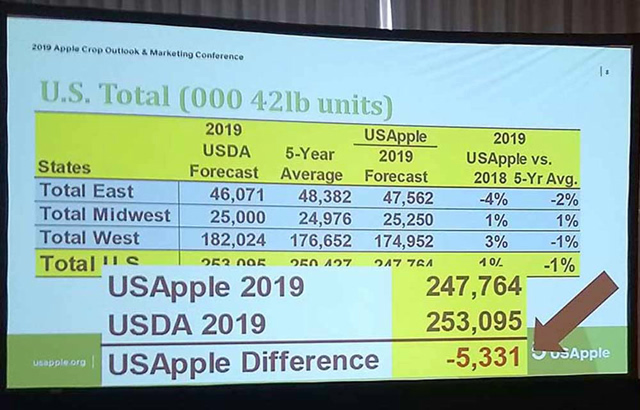
USDA's forecast of the 2019 U.S. crop, made in early August, was 253.1 million bushels. That would be the ninth largest crop in history.
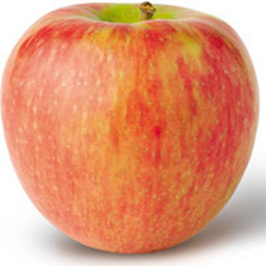 Red Delicious and Golden Delicious made up 57 percent of the market in 2000. In 2019, they're at 25 percent, and still going down.
Red Delicious and Golden Delicious made up 57 percent of the market in 2000. In 2019, they're at 25 percent, and still going down.
For 2018, the most popular apple top 5 was: Gala, Red Delicious, Fuji, Granny Smith, and Honeycrisp.
Honeycrisp production will most likely surpass Granny Smith in 2019 and could very well surpass Fuji next year, which would move it into third place.
The first farmers to cultivate Honeycrisps patented the process, which made it very difficult for other growers to get access to seedlings or established crops. Although the patent expired in 2008, the number of farmers growing Honeycrisp apples is nevertheless somewhat small when compared to other varieties.
In part this is because of the shorter, later season, but also because of the care and attention trees need in order to produce the very best apples. Honeycrisps typically command a higher price than other varieties as a result.
The English Apple Man Comments: "Nothing new there; the best tasting apples, usually have growing challenges!
That is all for this week ![]()
Take care
The English Apple Man